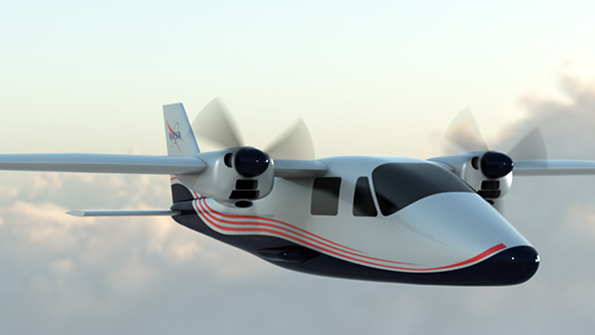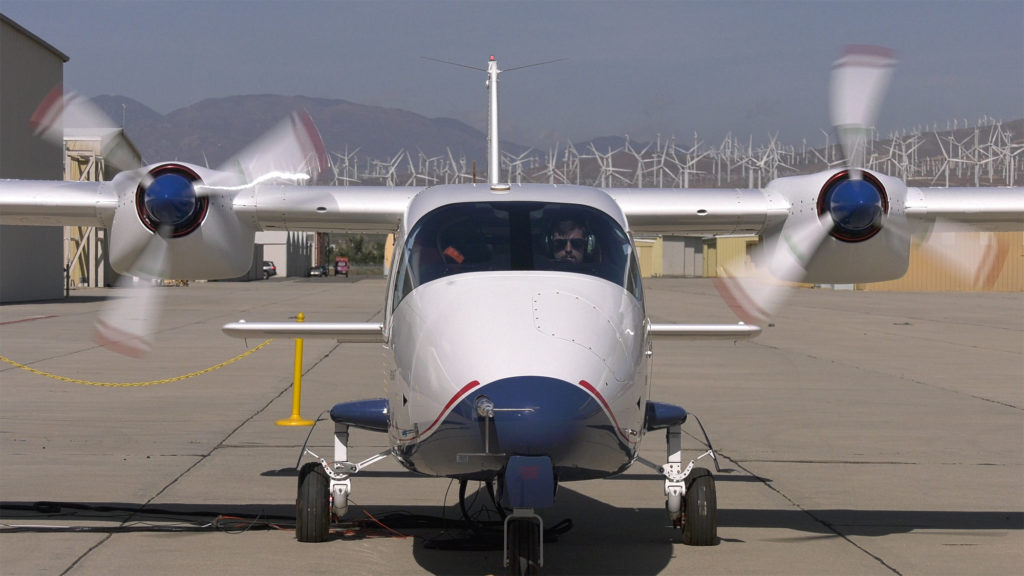
NASA’s X-57 Maxwell, the agency’s first all-electric X-plane and first crewed X-planed in two decades, is delivered to NASA’s Armstrong Flight Research Center in Edwards, California, in its Mod II configuration. The first of three primary modifications for the project, Mod II involves testing of the aircraft’s cruise electric propulsion system. Delivery to NASA from prime contractor Empirical Systems Aerospace of San Luis Obispo, California, marks a major milestone for the project, at which point the vehicle is reintegrated for ground tests, to be followed by taxi tests, and eventually, flight tests. X-57’s goal is to further advance the design and airworthiness process for distributed electric propulsion technology for general aviation aircraft, which can provide multiple benefits to efficiency, emissions, and noise.
For an electric aircraft, one challenge is to improve the battery technology in order to store more energy and extend the plane’s range. Due to current battery limitations, Maxwell’s design is envisioned for use as an air-taxi or commuter plane for a small number of passengers in short-haul flights.


The X-57 Mod II aircraft delivery to NASA is a significant event, marking the beginning of a new phase in this exciting electric X-plane project,” said X-57 Project Manager Tom Rigney. “With the aircraft in our possession, the X-57 team will soon conduct extensive ground testing of the integrated electric propulsion system to ensure the aircraft is airworthy. We plan to rapidly share valuable lessons learned along the way as we progress toward flight testing, helping to inform the growing electric aircraft market.”
While X-57’s Mod II vehicle begins systems validation testing on the ground, efforts in preparation for the project’s following phases, Mods III and IV, are already well underway, with the recent successful completion of loads testing on a new, high-aspect ratio wing at NASA Armstrong’s Flight Loads Laboratory. Following completion of tests, the wing, which will be featured on Mods III and IV configurations, will undergo fit checks on a fuselage at ESAero, ensuring timely transition from the project’s Mod II phase to Mod III.
A goal of the X-57 project is to help develop certification standards for emerging electric aircraft markets, including urban air mobility vehicles, which also rely on complex distributed electric propulsion systems. NASA will share the aircraft’s electric-propulsion-focused design and airworthiness process with regulators and industry, which will advance certification approaches for aircraft utilizing distributed electric propulsion.
The X-57 team is using a “design driver” as a technical challenge, to drive lessons learned and best practices. This design driver includes a 500% increase in high-speed cruise efficiency, zero in-flight carbon emissions, and flight that is much quieter for communities on the ground.
The X-57 project operates under the Integrated Aviation Systems Program’s Flight Demonstrations and Capabilities project, within NASA’s Aeronautics Research Mission Directorate.